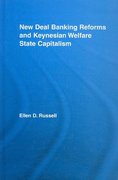Question
Rittenberg, L., & Tregarthen, T. (2012). Macroeconomics Principles V. 2.0. Licensed under Creative Commons by-nc-sa 3.0 https://drive.google.com/file/d/1-1bOivgJmCExpb7QcjBq0v6B2DlT1zky/view?usp=drivesdk Burger World is contemplating installing an automated ordering
Rittenberg, L., & Tregarthen, T. (2012). Macroeconomics Principles V. 2.0. Licensed under Creative Commons by-nc-sa 3.0
https://drive.google.com/file/d/1-1bOivgJmCExpb7QcjBq0v6B2DlT1zky/view?usp=drivesdk
Burger World is contemplating installing an automated ordering
system. The ordering system will allow Burger World to
permanently replace five employees for an annual (and
permanent) cost savings of $100,000.
a. If the automated system cost $1,000,000, what is the rate of
return on the investment?
b. If the system cost $2,000,000, what would be its rate of
return?
c. If the government were to introduce an investment tax
credit that allows firms to deduct 10% of its investment from
its tax liability, what would happen to the rate of return if
the system costs $1,000,000?
d. If Burger World has to pay 8% to borrow the funds to
purchase the system, what is the most it should pay for the
system? Assume that there is no investment tax credit.
Step by Step Solution
There are 3 Steps involved in it
Step: 1

Get Instant Access to Expert-Tailored Solutions
See step-by-step solutions with expert insights and AI powered tools for academic success
Step: 2

Step: 3

Ace Your Homework with AI
Get the answers you need in no time with our AI-driven, step-by-step assistance
Get Started


